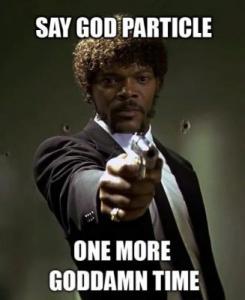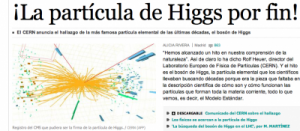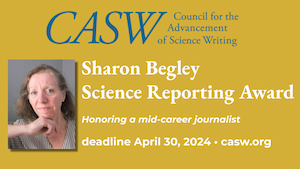NEW RETRACTION RECORD SET: 172 FOR A SINGLE RESEARCHER. IS THERE SOMETHING IN THE AIR FOR ANESTHESIOLOGY?. The Japanese Society of Anesthesiologists is reporting a new record for number of retractions by a single researcher. The group says Yoshitaka Fujii falsified data in 172 of 212 papers published between 1993 and 2011.
And that may not be the end of it; it could not be determined whether data in another 37 Fujii papers were trustworthy. Only 3 papers showed no evidence of fabrication. At ScienceInsider, Dennis Normile quoted the report as saying, "It is as if someone sat at a desk and wrote a novel about a research idea."
At Retraction Watch, Adam Marcus has been reporting on this story regularly, and in a post this week poses a question I've been wondering about myself: Is there something about anesthesiology that predisposes to fraudulent papers? The three researchers who have retracted the most papers are all anesthesiologists, and together they account for 13% of the 2000-plus retractions amassed so far. Are the anesthesiology clusters just random? Is there less oversight of research anesthesiologists than other specialties, as a Marcus source suggests? My cynical speculation is that maybe there's something in the air.
ONCE MORE, THE HIGGS BOSON: HOW THE TALE IS TOLD. I was thinking about skipping the Higgs on grounds of been there, done that. If you're even barely sentient you could hardly have missed this week's installment of the regularly leaking unofficial news from CERN that researchers have maybe probably perhaps collected evidence of the Higgs boson. the particle that's going to show where mass comes from.
But, as usual, there are blog posts that expand and deepen the story, or tell it better than MSM, and blog posts that consider how the story is being told. So here, with a focus on Higgs pedagogy by science writers, a small selection of good Higgs fare on blogs that you may not have seen.
The CERN session was webcast on Wednesday, but there was high-profile live-blogging by Sean Carroll and others at Cosmic Variance and insider live-blogging from Tommaso Dorigo, a particle physicist at CERN and Fermilab, blogging at A Quantum Diaries Survivor.
Knight Science Journalism Trackers were, of course, tracking news coverage. For lots of English-language links, consult Charlie Petit. The Tracker site also tracks and links to media in other tongues. Pere Estupinyà tells us that the Spanish press did a good job, but in Latin America, not so much.
Dennis Overbye wrote the New York Times story, but he noted in a blog post that an industry has grown up to explain exactly what the Higgs boson is. The post embedded a handful of explanatory videos, but it can be argued that none of them really get the job done, a point I'll get back to shortly.
Meantime, consult SciAm's John Horgan at Cross-Check for his clear explanation (reposted from late last year) of why
discovering the Higgs would be a modest, even anti-climactic achievement, relative to the grand ambitions of theoretical physics. The Higgs would serve merely as the capstone of the Standard Model of particle physics, which describes the workings of electromagnetism and the strong and weak nuclear forces. The Standard Model, because it excludes gravity, is an incomplete account of reality . . . Our best theory of gravity is still general relativity, which does not mesh mathematically with the quantum field theories that comprise the Standard Model. Over the past few decades, theorists have become increasingly obsessed with finding a unified theory, a “theory of everything” that wraps all of nature’s forces into one tidy package . . . But the Higgs doesn’t take us any closer to a unified theory than climbing a tree would take me to the Moon.
THE LAST WORD FROM FERMILAB. While you're up, spare a tear for the sad folks at the now-shuttered Fermilab Tevatron in Illinois. So near to the Higgs, yet ultimately so far. Here,from John Conway, is the Final Word from the Fermilab Tevatron on the Higgs.
Symmetry Breaking, from Fermilab and SLAC National Accelerator Laboratory (formerly the Stanford Linear Accelerator Center) is occupying the empty hours with a photo contest, inviting readers to place the particle in their landscapes of choice. I guess this is a sciencey Photoshop variation on the garden gnome's 'round-the-world travels. Transport via Photoshop saves a lot of travel money, but the examples I've seen so far are pretty lame; surely you can do better.
SIDEBAR ON THE HIGGS, SCIENCE WRITING, PLAGIARISM, AND HOW TO PREVENT ACCIDENTAL EXPROPRIATION. A brief digression weaving together the discombobulating experience of being a science writer frustrated at explaining a major development in science with recent accusations of fraudulent science writing discussed here previously. Not my weaving, I hasten to add; the weaving is the work of Seth Mnookin at his PLoS blog The Panic Virus, also the name of his book on the anti-vaccine movement.
Mnookin writes of a BBC ripoff of Ian Sample's video explaining the Higgs. (The Sample video's embedded in Mnookin's post and also in the Laura Oliver post mentioned below.) The BBC larceny was thoroughly Twitter-trashed by several of the best known science-writer/bloggers: Deb Blum, Carl Zimmer, Ed Yong, Maryn McKenna, David Dobbs and others.
A few of them also assembled, at Mnookin's request, to mull over the recent accusations of recycling and plagiarism against the well-known science writer Jonah Lehrer, a major topic here a couple weeks ago.
You may recall that one claim was that Lehrer had used the work of another well-known science writer, Malcolm Gladwell. In my post I said it didn't look to me as if Lehrer had appropriated Gladwell so much as it did that both of them had, um, borrowed freely from William Goldman's account of his adventures in screenwriting. In Mnookin's post, Deb Blum explains how easily this can happen by accident:
I occasionally will catch this kind of slip as a writing instructor. It’s the electronic cut and paste – students copy a paragraph here and there meaning to rewrite them later, as placeholders for a point they want to make. But they’re in a hurry so they don’t rewrite and the original copy slips through. Or they forget to mark the passage and it just slides through.
I think she's right that the demon here is cut-and-paste. Cut-and-paste is a magical digital blessing. But it can encourage what I guess I'll call inadvertant plagiarism, or maybe (somewhat less censoriously) accidental adaptation.
Back in the last century, when we used index cards to paraphrase and copy direct quotes from written sources, it was nearly impossible to make the honest error of transcribing someone else's words as your own without realizing it. If the material came from an index card, you knew it didn't originate with you.
These days, to make sure you don't mix up your words with theirs, you have to find some way of flagging cut-and-pasted source material. I have used curly brackets and rows of asterisks and sometimes fenced it off with lines of equals signs. Doesn't matter how you do it. Just do it, and save yourself headaches and heartache.
DEPARTMENT OF HIGGS MULTIMEDIA, THEOLOGY, EPISTEMOLOGY, AND PEDAGOGY. In a single post, Cosmic Log's ambitious Alan Boyle quotes physicist Lawrence Krauss's explanation for why the Higgs is actually the Godless Particle and also presents the first of three videos from Henry Reich, creator of Minute Physics, explaining what the Higgs is and why it matters.
I'm about ready to declare the Higgs the biggest challenge in science writing. It eludes clear explanation. I have looked at many attempts, all valiant, some clever, but even the best among them are not quite successful. At the Guardian, Laura Oliver throws up her hands and begs help from science teachers and any others who might have a clue. Add your comments to the post here. How would you explain the Higgs to a seven year-old? What's the best analogy? Can it be described in 200 words or less? She suggests tweeting your ideas to #Higgshelp. As if 200 words isn't bad enough, now you have to say what the Higgs is and why it's worth spending $10 billion on in 140 characters.
At the Atlantic, Robert Wright explains why he has given up on explaining the Higgs at all. Wright believes the human brain is incapable of comprehending subatomic physics. We evolved to cope with what he calls the macroscopic world and what I would call the real world.
I personally continue to have no idea what the Higgs boson is. And I think the physicists who 'understand' what it is can do so only because they don't have the layperson's compulsion to think about the world in ways that are ultimately metaphorical. Or, at least, these physicists have dropped the idea that to truly understand something is to have a crystal-clear metaphor in your mind, a metaphor that doesn't break down at any point and doesn't contain internal contradictions. For them, apprehending a purely mathematical description of something is tantamount to comprehending it.
That is an inventive and possibly classy and even novel excuse for a failure of science writing: Evolution made me do it.



.png)

